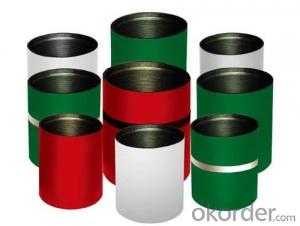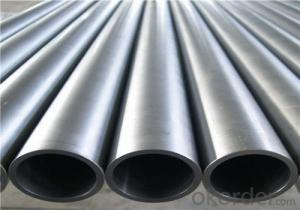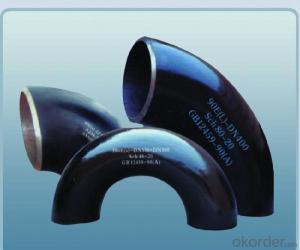Bending Stainless Steel Tubing
Bending Stainless Steel Tubing Related Searches
Best Paint For Stainless Steel Blanket Insulation For Steel Buildings Primer For Galvanized Steel Foam Filter For Stainless Steel H S Code For Stainless Steel Surface Grinding Wheels For Stainless Steel Surface Grinding Wheels For Hardened Steel Hole Saw For Stainless Steel Paint For Stainless Steel Stainless Steel For BbqHot Searches
Steel Mesh Panels For Sale Price For Stainless Steel Scrap Scrap Price For Stainless Steel Price For Stainless Steel Stainless Steel Tank For Sale Stainless Steel Sheets For Sale Cheap High Tea Sets For Sale Stainless Steel Tanks For Sale Stainless Steel For Sale High Density Fiberboard For Sale Solar Hot Water Collectors For Sale Scaffolding For Sale In Uae Scaffolding For Sale In Ireland Scaffolding For Sale In Houston Type Of Inverter For Solar Price Of Shipping Containers For Sale Types Of Inverter For Solar Stock Price For Aluminum Used Solar Inverter For Sale Steel Mesh Panels For SaleBending Stainless Steel Tubing Supplier & Manufacturer from China
Okorder.com is a professional Bending Stainless Steel Tubing supplier & manufacturer, offers integrated one-stop services including real-time quoting and online cargo tracking. We are funded by CNBM Group, a Fortune 500 enterprise and the largest Bending Stainless Steel Tubing firm in China.Hot Products
FAQ
- Stainless steel sheets are widely acknowledged for their high level of abrasion resistance. They possess exceptional durability and hardness, which render them impervious to damage caused by friction or contact with abrasive substances. The extent of this abrasion resistance can differ, depending on factors such as the grade and finish of the stainless steel sheet, as well as the particular purpose it serves. Nonetheless, stainless steel sheets are renowned for their outstanding ability to withstand scratches, scuffs, and other types of abrasion, thereby making them a preferred option across diverse industries that prioritize longevity and durability.
- To prevent scratching on stainless steel sheets during handling and installation, there are several steps you can take: 1. Use protective covering: Apply a protective covering or film on the surface of the stainless steel sheets before handling or installing them. This covering acts as a barrier, preventing scratches and scuff marks during transportation and installation. Ensure that the covering is suitable for stainless steel and does not leave any residue upon removal. 2. Handle with care: Be mindful of how you handle the stainless steel sheets. Avoid dragging or sliding them against rough surfaces or each other, as this can cause scratches. Instead, use proper lifting techniques and handle the sheets with clean, dry hands or gloves to minimize the risk of leaving marks. 3. Use appropriate tools: When working with stainless steel sheets, make sure to use tools that are specifically designed for this purpose. Avoid using tools with rough or abrasive surfaces that could scratch the stainless steel. Opt for tools made from soft materials or with protective coatings to minimize the chances of damaging the surface. 4. Clean work areas: Before installing stainless steel sheets, ensure that the work area is clean and free from any debris or particles that could potentially scratch the surface. Wipe down the area with a clean cloth or soft brush to remove any dirt, dust, or loose materials that could cause scratches during installation. 5. Secure sheets during transportation: If you need to transport stainless steel sheets, ensure that they are properly secured to prevent any movement or shifting that could lead to scratches. Use appropriate packaging materials such as foam inserts, edge protectors, or straps to keep the sheets in place and minimize the risk of damage. By following these preventive measures, you can significantly reduce the risk of scratching stainless steel sheets during handling and installation, ensuring a pristine finish and maintaining the quality of the material.
- What are the advantages and disadvantages of net drawing stainless steel users?
- The drawing is divided into: stainless steel, oil mill, dry grinding mill, drawing drawing drawing, the drawing effect is the most ideal oil mill, and the appearance is satisfactory!Mirror stainless steel plate making principle is stainless steel plate raw material, with grinding fluid through the polishing equipment in the steel plate surface polishing, make the board surface is smooth and the brightness is as clear as the mirror. Stainless steel mirror panel products are widely used in architectural decoration, elevator decoration, industrial decoration, facilities decoration and other decoration projects.
- The appearance and texture of brushed and polished stainless steel sheets vary. Brushed sheets have a matte finish achieved by brushing the surface with an abrasive material, which creates parallel lines or patterns. This finish helps conceal scratches and fingerprints, making it popular for durable applications. On the other hand, polished sheets have a glossy finish achieved by polishing with a fine abrasive compound. This process eliminates imperfections and scratches, resulting in a mirror-like reflection. The polished finish is more visually appealing and commonly used for decorative purposes. In summary, the main distinction between brushed and polished stainless steel sheets lies in their appearance and texture. Brushed sheets have a textured, matte finish that is more resistant to scratches and fingerprints, while polished sheets have a smooth, glossy finish that provides a mirror-like reflection. The choice depends on the desired aesthetic and specific application requirements.
- To prevent warping on stainless steel sheets, it is important to ensure proper handling and storage practices. Avoid placing heavy objects on top of the sheets, as this can cause them to bend or warp. Additionally, store the sheets in a clean and dry environment to prevent moisture absorption, which can also lead to warping.
- Yes, stainless steel sheets can be used in swimming pool applications. Stainless steel is known for its corrosion resistance, making it a suitable material for prolonged exposure to water and chemicals typically found in swimming pools. It is also easy to clean and maintain, making it a popular choice for pool construction and renovation projects.
- Indeed, signage or lettering can make use of stainless steel sheets. Stainless steel, a remarkably durable and adaptable material, finds wide application in signage and various other fields. It possesses exceptional resistance to corrosion, rendering it suitable for both indoor and outdoor utilization. With stainless steel sheets, it becomes effortless to fabricate and shape them into diverse dimensions, enabling the creation of personalized signage and lettering designs. Moreover, stainless steel imparts a sleek and contemporary look, making it a captivating choice for signage in commercial or professional environments. In conclusion, stainless steel sheets offer a dependable and enduring solution for all your signage and lettering requirements.
- There are various options available for protecting stainless steel sheets from corrosion, scratches, and other damage. Each option offers different levels of protection and can be chosen based on specific needs. One commonly used method is the application of a thin, adhesive film onto the stainless steel surface. This film acts as a barrier, safeguarding the sheet from scratches, dirt, and other contaminants. Typically, this film is removed after the sheet is installed. Another popular option is PVC coating, which involves applying a thicker and more durable layer of polyvinyl chloride onto the stainless steel. This coating provides excellent corrosion resistance and is available in different colors and finishes. It can be applied through a process called powder coating. Alternatively, a layer of paint can be applied to the stainless steel surface through spray painting or electrostatic coating methods. Paint coatings not only protect against corrosion but also enhance the appearance of the sheet. Passivation is a chemical process that removes iron from the stainless steel surface, creating a protective oxide layer. This layer improves the sheet's resistance to corrosion and is commonly used in industries with aggressive environments. Electropolishing is a process that removes a thin layer of metal from the stainless steel surface, resulting in a smooth and clean finish. It not only enhances the appearance but also increases the sheet's corrosion resistance. Metal plating involves applying a thin layer of another metal, such as zinc or nickel, onto the stainless steel surface. This provides sacrificial protection, as the plated metal corrodes instead of the underlying stainless steel. Metal plating is commonly used in outdoor applications exposed to harsh environments. When selecting the appropriate surface protection method, it is crucial to consider factors such as the environment, intended use, and aesthetic preferences. These factors will help determine the most suitable option for protecting the stainless steel sheet.















































